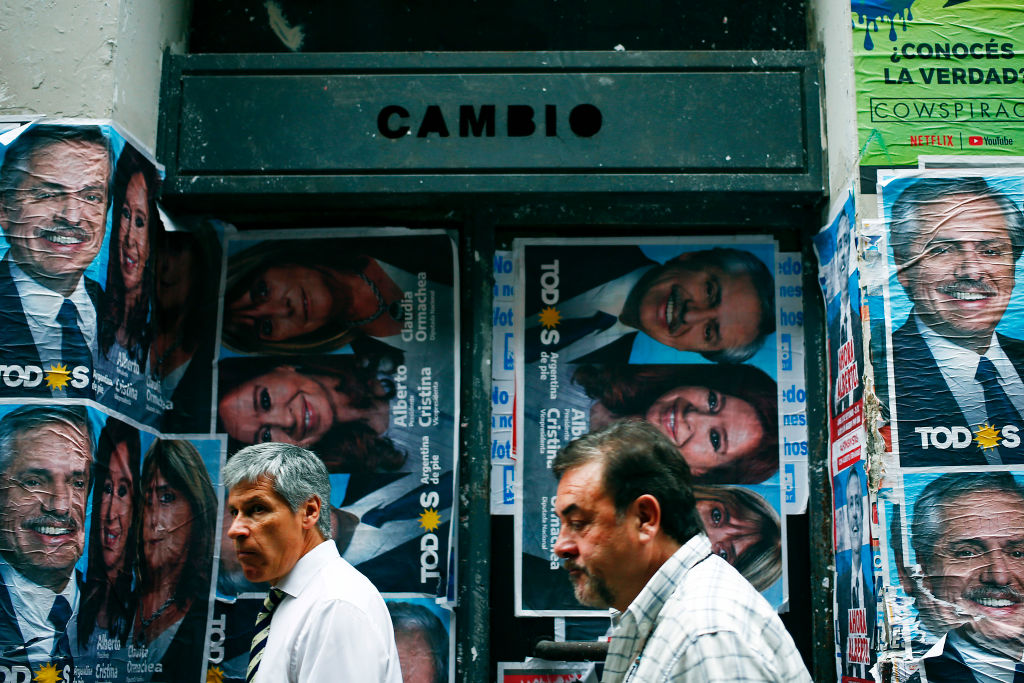When Cristina Fernández de Kirchner replaced her husband on 10 December 2007 as president of Argentina, she inherited a relatively favorable position in Argentine politics. On the heels of an economic recovery and high popularity ratings, she seemed poised to continue the policies that helped rid Argentina of its debt. Less than eight months later, she is in the driver’s seat of what could become the longest lame-duck presidency in Argentine history. Much of the instability stems from the conflict between the agricultural sector and the government.
In response to tax hikes on 11 March 2008 on main exports such as soya beans and other farm products, Argentina’s most powerful group, El Campo and the entities that comprise it took to the streets—blocking domestic and international trade routes in the largest protests against the government since the financial meltdown of 2001.The strikes and road blockades, which lasted for over four months, caused food shortages at home and abroad, crippled domestic and international trade, and ironically cost the Argentine government billions of dollars in potential revenue from commodity exports, which are at an all time high. The standoff was partially resolved when a controversial vote by Cristina’s own vice president Julio Cobos voted against her mobile tax hikes on 17 July 2008, although the controversy and conflict are far from over. The situation was an embarrassment to the administration and her oft-criticized stubbornness succeeded in alienating the president further from her constituency. More importantly, the result of “Resolution 125” as it was known in Argentine Congress may be a sign that the unsustainable Kirchnersita policies that propelled Argentina out of its economic crisis may have reached their limit.
With more than three years remaining and a dismal approval rating hovering around 20-30%, the question remains as to whether Fernández de Kirchner can reclaim the popularity that catapulted her into the role of Argentina’s first woman president back in October 2007. Ostensibly, the chips are stacked against her: Out of control inflation, the resignations of economic advisors Martin Lousteau and Alberto Fernández, inter-administration strife, and a growing impatience with faltering kirchnerista policies are just some of the main issues on her plate. High commodity prices, which could be a boom for Argentina given that they are one of the world’s largest commodity exporters, have failed to come to fruition out of fear of out-of-control inflation. However, while she may not have the status of her husband/predecessor, the amount of time left on her term means that she has the chance to win back the hearts and minds of Argentina. Distancing herself from her husband’s policies would be a good place to start. A strong alliance between the two (Nestor, her husband, is the current president of the Jusitcialist Party, to which Cristina also belongs) complicates this, especially for someone who is still reeling from the political betrayal of a member of her own administration.
Inflation and Asado
For Cristina Fernández de Kirchner to maintain any credibility, she must go back to the issues that most affect her constituency base and bridge the wide gap that her unrelenting stance against el campo created. Inflation has long been a problem in Argentina, and consumers are incredibly wary and distrustful of policies that are incapable of controlling it. Curbing inflation, making sure there are no more food shortages, and putting the embarrassing farmer’s strike behind her and focusing on more pressing issues such as rising costs of energy could all lift her administration out of the doldrums. Given the current mistrust and anger, this is a tall order.
Cristina’s presidency will always be marred by the failure to reach an agreement with one of Argentina’s wealthiest and most powerful entities and the embarrassing outcome of her own vice-president voting against her.However, with over three years left, it remains to be seen if Cristina can rebound from the onslaught of negative events that have occurred since she assumed the presidency. Working in her favor are her alliances with other left-leaning presidents in the region such as Evo Morales and Hugo Chávez who can provide cheap energy (in the form of gas and oil) to Argentina, and a commitment to strong business relationship with Brazil. She has her work cut out for her, but all is not lost for the beleaguered Argentine president.

Reply